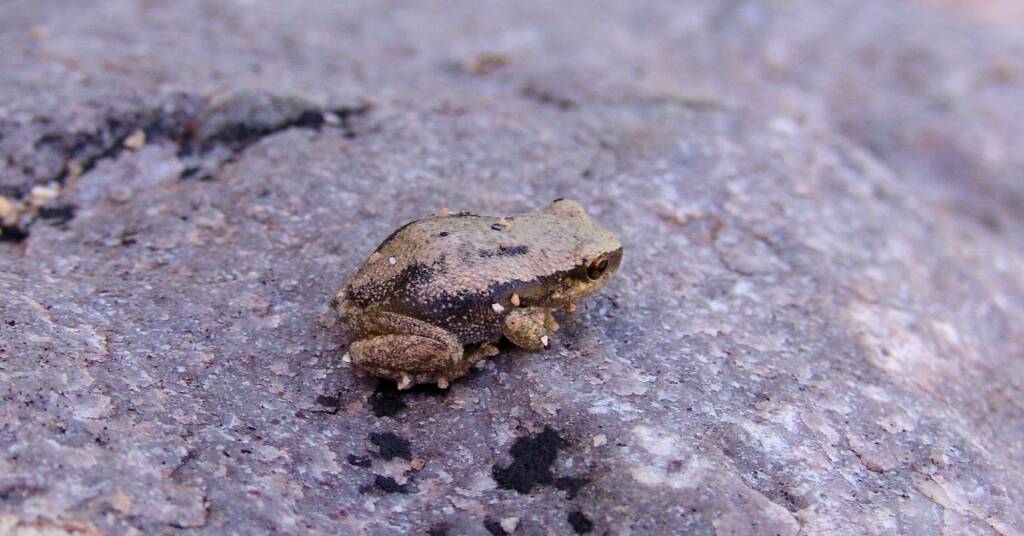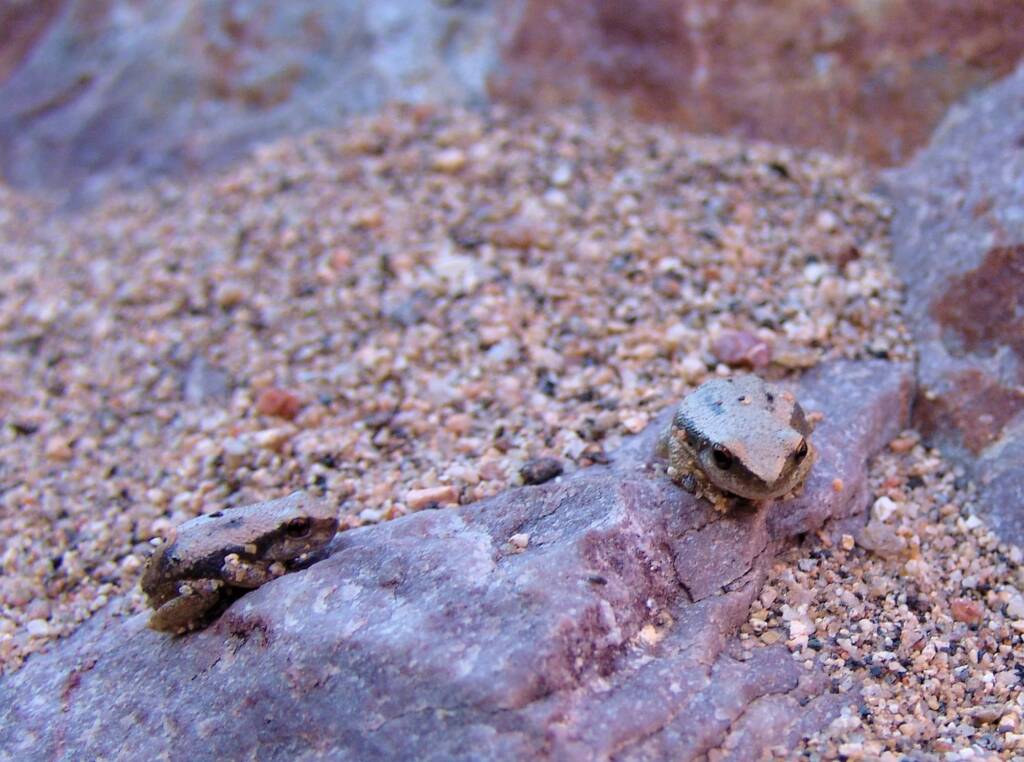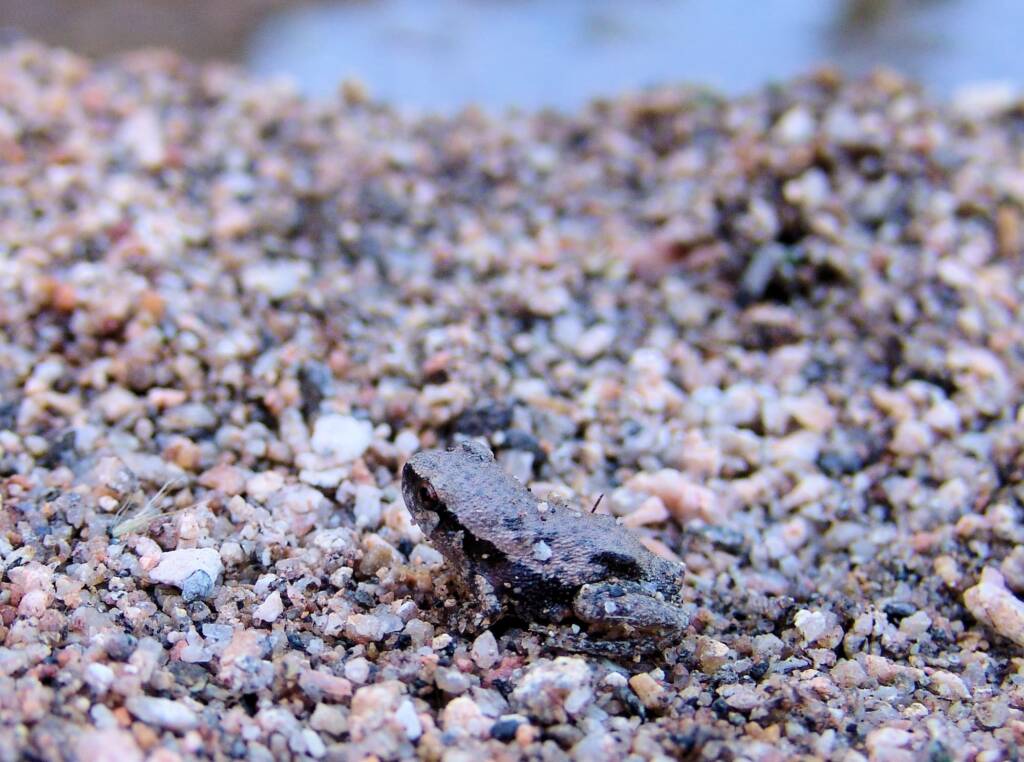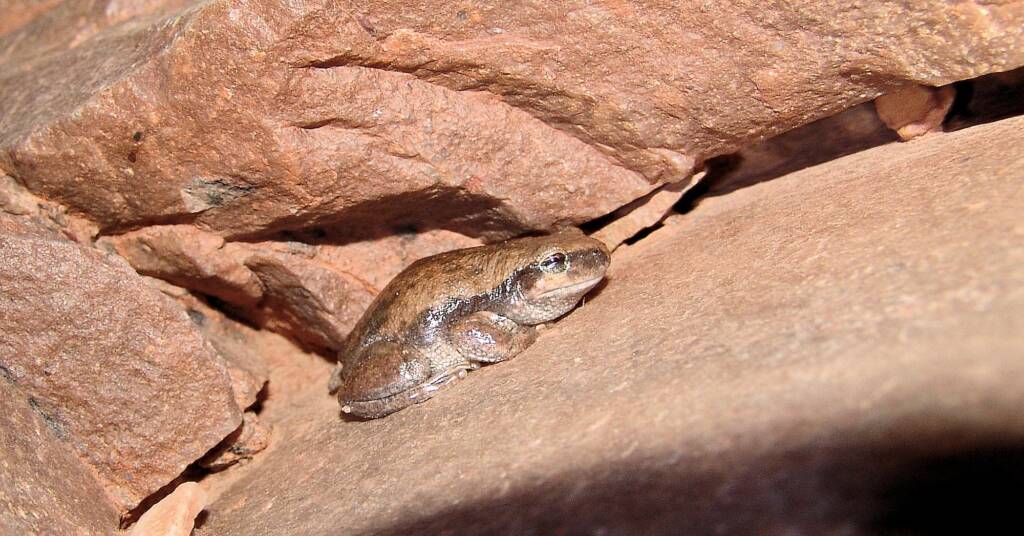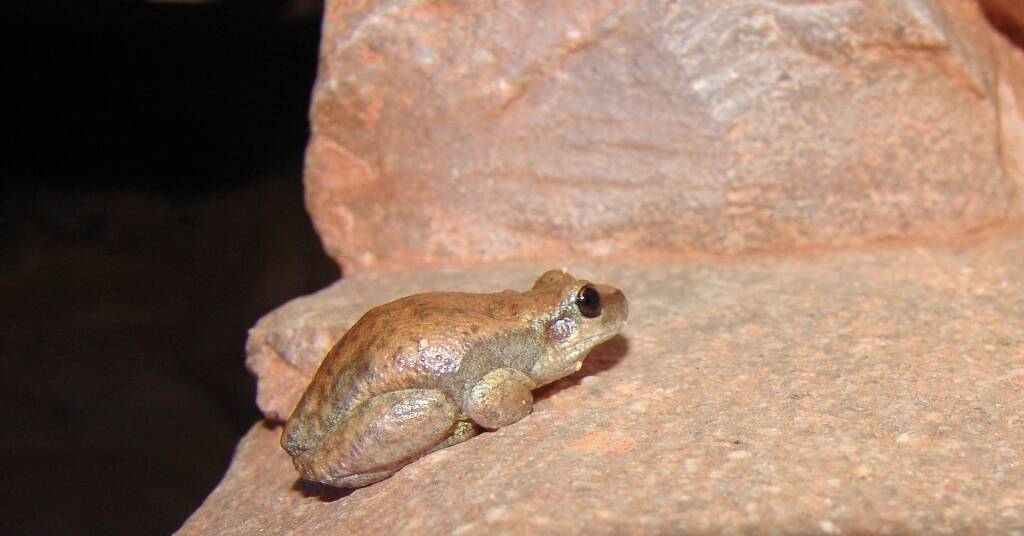FrogsAustralian Green Tree Frog (Ranoidea caerulea) Centralian Tree Frog (Ranoidea gilleni) Desert Tree Frog (Litoria rubella) Desert Trilling Frog Great Barred Frog (Mixophyes fasciolatus) Main’s Frog Long-footed Frog (Cyclorana longipes) Motorbike Frog (Ranoidea moorei) Peron’s Tree Frog Spencer’s Burrowing Frog
Desert Tree Frog (Litoria rubella) has a number of common name and varies in colour from grey, red-brown to fawn, often with dark flecks on its back. A dark band runs along the side of the head and body. Their colour is sometimes so well blended with its background, as can be seen with those found living in the rocky canyons of the arid centre, that you can often walk straight pass them, without noticing.
Found in a wide range of habitats across the top half of Australia, from the coast, through tropical and to the arid central regions, the frog is usually found sheltered under stones and bark, around creeks and waterholes. They can be found in sheds and other buildings, especially in moist areas, such as dripping pipe, swimming pools, and outdoor toilet areas.

Common name
Desert Tree Frog, Little Red Tree Frog.
Size
25-45 mm
Distribution
A widely dispersed frog that can be found living in a range of habitats from the coastal regions, tropical regions, through to the arid regions in Central Australia. They have been found in the northern parts of Western Australia, Northern Territory, the north-east corner of South Australia, Queensland and the northern parts of New South Wales.
Breeding
Because of the wide distribution and habitat, the Desert Tree Frog can be found, breeding annually, during the tropical wet season or summer, or if they are in the arid desert regions, they will breed whenever rain occurs. Males will call from the ground within a few metres of the water. They lay anywhere between 40 to 300 eggs, deposited as a film floating on the surface.
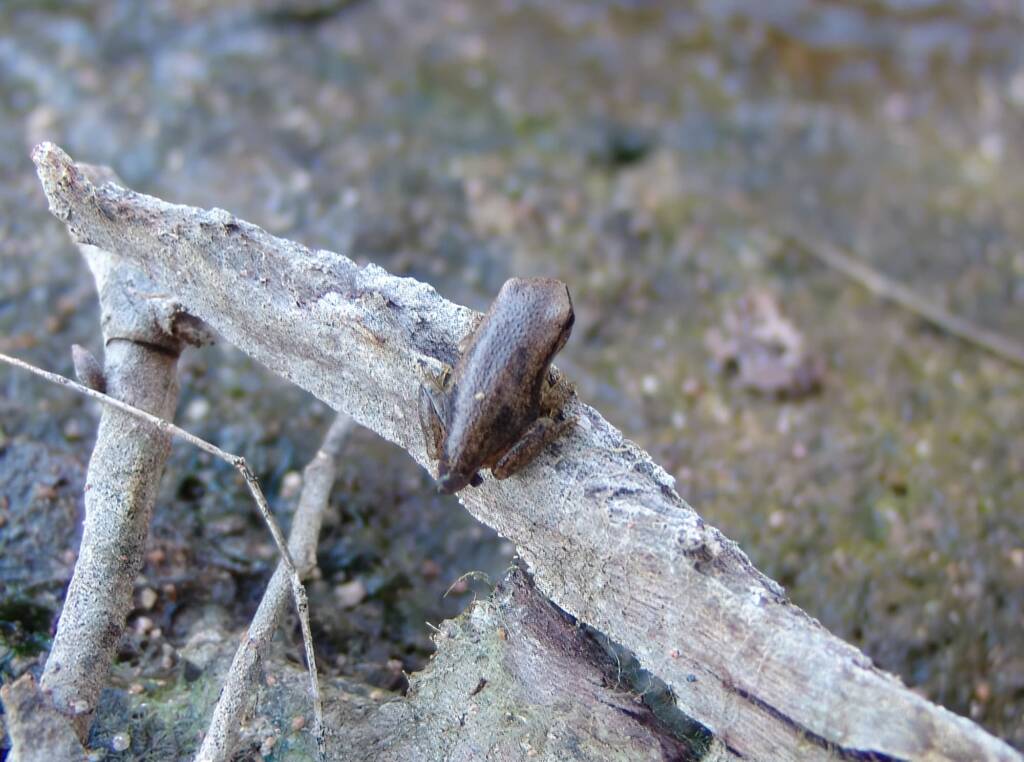
The tadpoles are of medium size and translucent with dark brown patches. Some environmental situations, such as the tadpoles living in a small amount of water, which would naturally heat to higher temperatures, would trigger the tadpoles to develop at a faster rate, developing into adults frogs within 14 days.

Call
The frog has a harsh loud sound, with a distinctly pulsed note, similar to the screech of a seagull.
- Scientific classification
- Kingdom: Animalia
- Phylum: Chordata
- Class: Amphibia
- Order: Anura
- Family: Pelodryadidae
- Genus: Litoria
- Species: Litoria rubella

FrogsAustralian Green Tree Frog (Ranoidea caerulea) Centralian Tree Frog (Ranoidea gilleni) Desert Tree Frog (Litoria rubella) Desert Trilling Frog Great Barred Frog (Mixophyes fasciolatus) Main’s Frog Long-footed Frog (Cyclorana longipes) Motorbike Frog (Ranoidea moorei) Peron’s Tree Frog Spencer’s Burrowing Frog







